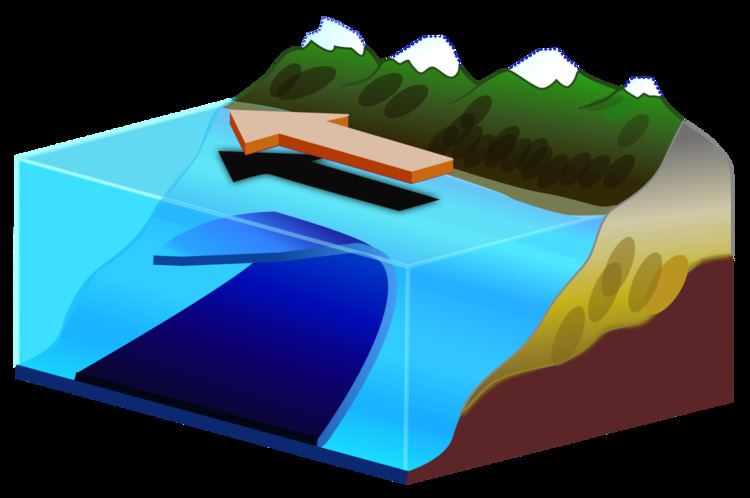In fluid dynamics, the Coriolis–Stokes force is a forcing of the mean flow in a rotating fluid due to interaction of the Coriolis effect and wave-induced Stokes drift. This force acts on water independently of the wind stress.
This force is named after Gaspard-Gustave Coriolis and George Gabriel Stokes, two nineteenth-century scientists. Important initial studies into the effects of the Earth's rotation on the wave motion – and the resulting forcing effects on the mean ocean circulation – were done by Ursell & Deacon (1950), Hasselmann (1970) and Pollard (1970).
The Coriolis–Stokes forcing on the mean circulation in an Eulerian reference frame was first given by Hasselmann (1970):
ρ f × u S , to be added to the common Coriolis forcing ρ f × u . Here u is the mean flow velocity in an Eulerian reference frame and u S is the Stokes drift velocity – provided both are horizontal velocities (perpendicular to z ^ ). Further ρ is the fluid density, × is the cross product operator, f = f z ^ where f = 2 Ω sin ϕ is the Coriolis parameter (with Ω the Earth's rotation angular speed and sin ϕ the sine of the latitude) and z ^ is the unit vector in the vertical upward direction (opposing the Earth's gravity).
Since the Stokes drift velocity u S is in the wave propagation direction, and f is in the vertical direction, the Coriolis–Stokes forcing is perpendicular to the wave propagation direction (i.e. in the direction parallel to the wave crests). In deep water the Stokes drift velocity is u S = c ( k a ) 2 exp ( 2 k z ) with c the wave's phase velocity, k the wavenumber, a the wave amplitude and z the vertical coordinate (positive in the upward direction opposing the gravitational acceleration).

